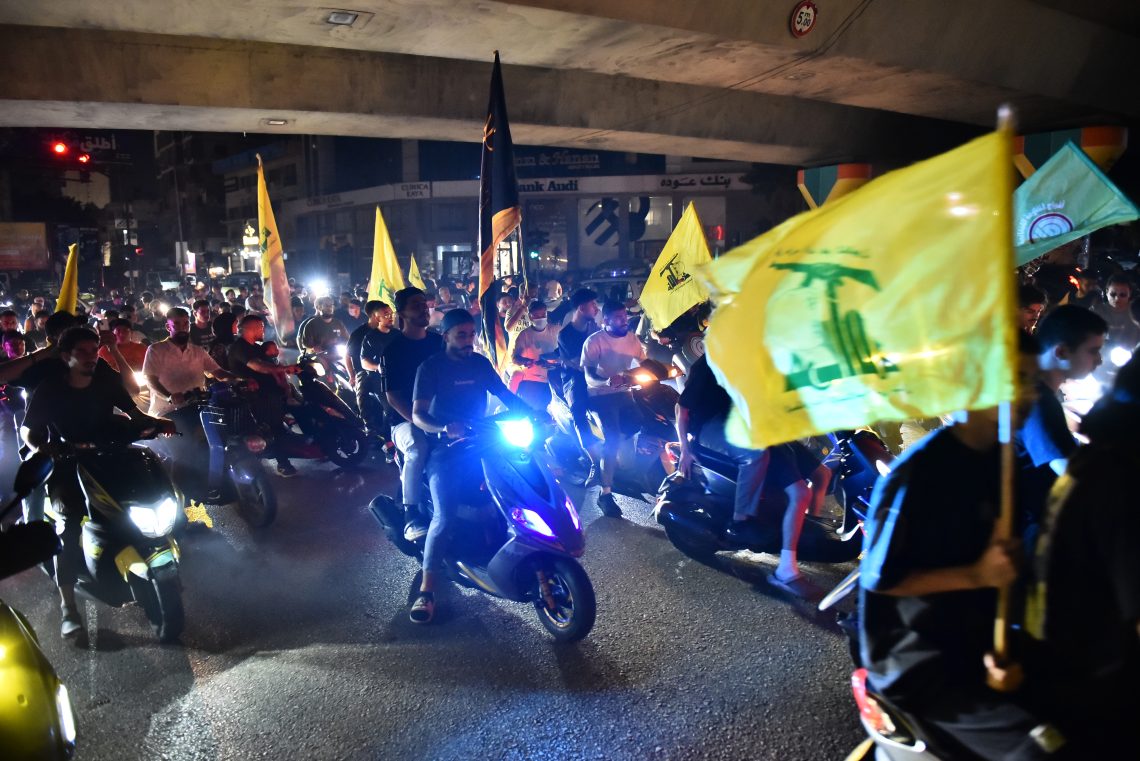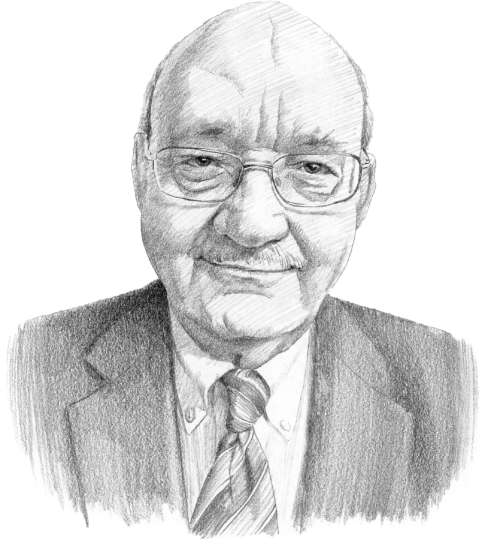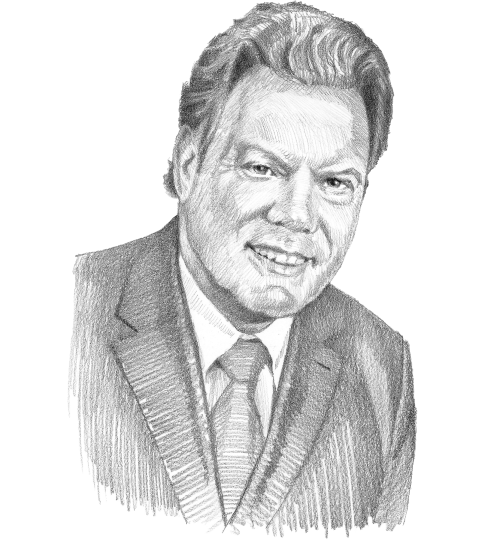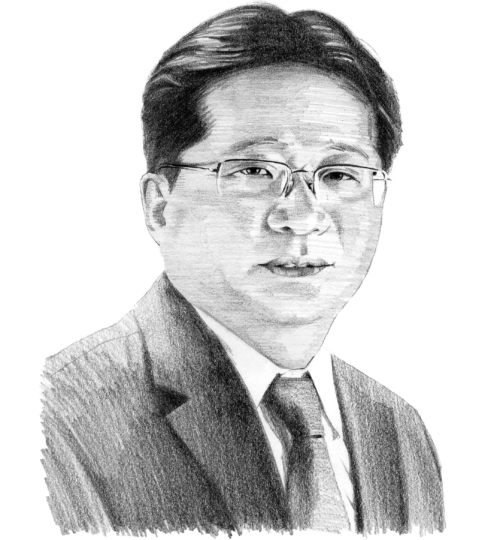Hezbollah’s refusal to disarm risks Lebanon’s stability
Lebanon’s plan to demilitarize Hezbollah by year-end could falter, risking renewed tensions with Israel and economic crisis. If enforced, it could spark civil unrest.

In a nutshell
- The Lebanese Army plans a phased demilitarization of Hezbollah
- The group’s leader vows to fight for weapons, threatening civil war
- Beirut’s political system complicates disarmament prospects
- For comprehensive insights, tune into our AI-powered podcast here
In August, the Lebanese government, under pressure from the United States and Saudi Arabia, decided by majority vote to disarm Hezbollah’s militia by year-end. This decision was made in the absence of the four ministers from the Amal and Hezbollah Shia parties, who staged a walkout in protest.
In exchange, the government secured promises of financial assistance, including U.S. aid for security forces and Gulf investments for Lebanon’s reconstruction. Washington is said to have approved a $230 million package for disarmament efforts. Under the plan, Saudi Arabia and Qatar would invest in southern Lebanon once the militant group lays down its weapons, stated Tom Barrack, U.S. President Donald Trump’s envoy to the Middle East.
Hezbollah leader Naim Qassem threatened the government with “civil war” and displayed armed members on motorcycles through Beirut and other cities to showcase strength.
On September 5, the Lebanese government “welcomed,” but did not fully endorse, a plan presented by the Lebanese Armed Forces (LAF) to disarm Hezbollah. The disarmament is structured in four phases targeting specific regions: south of the Litani River; from the Litani to the Awali River; Beirut (mainly the southwestern Shia Dahiya); and the Beqaa Valley.
The LAF is tasked with completing the disarmament by the end of this year. The military has said that by that time, it would only demilitarize the group south of the Litani. In pursuit of this goal, the Lebanese army is actively clearing Hezbollah arms caches in the south, having detonated so many that it has run out of explosives. Despite a year-end deadline to disarm the militia under a ceasefire agreement with Israel, while the army is intensifying its inspections to find hidden weapons, it does so only south of the Litani.

Lebanese Prime Minister Nawaf Salam assured that the army would submit a monthly report to the cabinet regarding its progress south of the Litani. Regarding the rest of the country, Information Minister Paul Morcos stated that “the LAF will begin implementing the plan according to its capabilities.” He also emphasized that success (apparently in the north of the Litani River) depends on the cooperation of other parties, particularly Israel. This implies that Israel must withdraw from the five strategic military positions it occupies on the Lebanese side of the border.
Israel insists that its operations in Lebanon are contingent on the enforcement of United Nations Security Council Resolution 1701, which mandates Hezbollah’s disarmament throughout the country. In October, Lebanese President Joseph Aoun urged resuming indirect negotiations with Israel, showing a stronger commitment than Prime Minister Salam to resolving the conflict.
Many in Lebanon worry that if Hezbollah does not disarm, another war with Israel will become unavoidable. Failing to demilitarize will also block the much-needed international financial bailout for Lebanon’s economy.
Yet, even President Aoun is reluctant to risk a confrontation with the group. As a result, Lebanon’s stance has created a deadlock, allowing Israel to justify delaying its withdrawal.
Beyond declarations, the Lebanese government acted by forming a joint dialogue committee with the Palestinian Authority and the Fatah movement. By mid-September, the LAF confiscated numerous weapons and ammunition from six Palestinian refugee camps across Lebanon. Only Fatah cooperated fully, while Hamas, Palestinian Islamic Jihad and other groups are still negotiating. Still, this first step, although symbolic, marks a good start.
Facts & figures
Israel’s strategic points in Lebanon

Hezbollah’s political erosion
The 1989 Taif Agreement, the peace accord that restructured the country’s political system and ended the Lebanese Civil War (1975-1990), mandated the disarmament of all armed factions except Hezbollah. This left the Shia organization, Bashar al-Assad’s Syria and Iran as the de facto overlords. In 2008, the government attempted to dismantle Hezbollah’s rogue telecommunications network and airport surveillance. The group responded with gunfire, seizing parts of Beirut in clashes that killed dozens.
To avoid another civil war, the Arab League convened a conference in Qatar in May 2008. The resulting Doha Agreement established a national unity government and granted the opposition a “blocking third” with veto power over cabinet decisions. Since Hezbollah’s coalition secured more than a third of parliament and the state, this gave them veto power over every government decision.
After the Israel-Hezbollah war in the summer of 2006, the UN Security Council Resolution 1701 reinforced the Taif Agreement’s disarmament call, demanding that all armed groups in Lebanon, including Hezbollah, demilitarize. This disarmament has still not been fully implemented. From 2008, Hezbollah has been legally able to freeze any actions aimed at dismantling their illegal arms, border crossings, communications and banking operations.
More on the Middle East
- A plan to end the Israel-Hezbollah war
- Iran’s oil sector: Strategic presence, diminished influence
- Who will win the competition for influence in Syria?
A meaningful, but still insufficient, change occurred in the May 2022 general elections. Hezbollah’s coalition lost ground, securing 61 seats in the 128-member legislature, a drop of 10 seats from four years earlier. This setback was magnified by the damage caused to Lebanon due to Hezbollah’s attack on Israel and the subsequent war in 2023-2024, compounded by the group’s military failures during that conflict. Although Prime Minister Salam’s post-war government, formed in February of this year, includes five Shia ministers, the group no longer has its non-Shia coalition partners. With only five of the 24 cabinet seats, or 21 percent, Hezbollah and its allies fell short of the one-third needed to veto the disarmament decision.
Parliament has not yet approved the government’s disarmament decision, but Hezbollah and Amal have not pursued a no-confidence vote, recognizing their lack of support from most parliamentary allies to topple the government.
Lebanon’s sectarian political system allocates 128 parliamentary seats by religious group, including 27 for Shia members. Hezbollah and Amal each hold 13 Shia seats, with Amal also having one Greek Orthodox member and an independent Shia. Since 2008, they have received backing from the Druze community, represented by the Progressive Socialist Party, and Gebran Bassil’s Free Patriotic Movement, a mixed Christian party. Both parties withdrew their support after the conflict ended in November 2024.
Hezbollah and its allies have lost their parliamentary majority, but they still hold more than a third of the representatives. This means their absence can prevent key votes due to the two-thirds quorum requirement, a quirk in Lebanon’s complex political system. While Hezbollah can block a vote, it cannot win one. As a result, the current government can make decisions against Hezbollah without fear of a no-confidence vote, but it still hesitates to risk military confrontation, which hinders disarmament beyond the Litani River.
Military decline of Hezbollah
Hezbollah is at its weakest military position since the late 1990s. According to the Israeli Defense Forces, since the outbreak of the conflict in October 2023, Hezbollah has suffered the loss of at least 5,000 fighters, with around 7,000 others wounded. It is important to note that at that time, Hezbollah had a standing force of at least 20,000 personnel, along with a similar number of reservists. This means that they still have approximately 10,000 regular fighters and a considerable pool of reservists. However, the militant group has lost most of its senior and mid-level military commanders, as well as most of its top political leadership.
Rebuilding these command structures will take years. Additionally, they have incurred substantial materiel losses, with around 80 percent of their 40-kilometer range rockets destroyed, along with many drones and missiles. Nonetheless, they still retain about 30,000 rockets and a few hundred heavy missiles.
Although the group is gradually developing a local drone industry as a cheaper alternative to rockets and missiles, it has lost nearly all its bunkers and fortifications south of the Litani River. Ongoing search-and-destroy operations by Israel and the LAF in the south pose major challenges to rearming and rebuilding defenses there. Elsewhere in Lebanon, Hezbollah has restored about 30 percent of its rocket and drone losses through domestic production. Financially, the group has been hit hard, losing most of its cash and gold stored in al-Qard al-Hassan bank branches. In July 2024, the Lebanese central bank prohibited all banks from doing business with the Hezbollah-affiliated financial institution.

Iran continues to provide monetary backing to maintain the loyalty of its fighters. In September, Ali Larijani, secretary of Iran’s Supreme National Security Council, pledged support for Hezbollah and Lebanon to counter disarmament pressures.
Hezbollah’s military defeat in the 2023-2024 war was exacerbated by two regional events: the fall of the Assad regime in Syria, and a severe blow to Tehran by the Israeli Air Force during the 12-Day War in June of this year. On December 8, 2024, the Alawite-led government of Mr. Assad was overthrown by Sunni Islamist opposition forces, spearheaded by Hay’at Tahrir al-Sham (HTS) led by Ahmed Hussein al-Sharaa. Israel leverages HTS’s anti-Iran stance to curb Hezbollah’s influence, with notable success.
Hezbollah’s easy access to Iranian arms, personnel and funding – routed from Tehran through Baghdad and Damascus to Beirut – has been disrupted. However, Iran still smuggles cash and weapons from Iraq into Syria using professional smugglers and remnants of the Islamic State and pro-Iranian militias.
For now, Hezbollah is significantly weakened militarily and politically, and geographically isolated. Nevertheless, there is strong evidence that it is recovering. Without swift action from the Lebanese government, the group will regain strength.
Scenarios
Hezbollah and its backers in Tehran staunchly oppose disarmament but know that many Lebanese blame them for the war and are growing weary of them. Even before the war, Lebanon was in deep crisis. The World Bank estimates the economic cost of the recent conflict at $14 billion, including $6.8 billion in physical damage and $7.2 billion in economic losses. The war resulted in Lebanon’s real gross domestic product contracting by 7.1 percent in 2024, compared to a no-conflict growth estimated at 0.9 percent.
As the May 2026 parliamentary elections approach, the group recognizes the urgent need to improve its public image. If they fail to do so, Hezbollah may find itself facing more challenges than ever before.
Likely: Hezbollah loses political legitimacy after the 2026 elections
Until now, the convoluted Lebanese democratic system has allowed the group to maintain control and project an image of legitimacy, thanks to their non-Shia collaborators. In the May municipal elections, Hezbollah and Amal still received support from Shia voters. Yet, if efforts are made to limit Iranian financial influence, it may not be guaranteed that they will win all 27 Shia seats, or even the 26 they currently hold, in the next parliamentary elections. The Shia-majority southern region remains in ruins, with only a handful of villagers returning to their homes. Dissatisfaction is growing among those who were displaced.
Hezbollah must regain the allegiance of the Druze and Christian parties that withdrew in 2024. Personal bribes will not suffice, as these communities face economic collapse. Investments from the U.S., France and Gulf Arab countries will be highly appealing.
There are many independent candidates, primarily Sunnis, some of whose representatives may back Hezbollah for the right price, but not if they confront the demand for disarmament head-on. Their tactic is to negotiate, delay and procrastinate. If Hezbollah, along with Amal and a few others, fails to secure one-third of parliament, they will not be able to block majority votes against them, and they will lose important cabinet ministries, administrative positions and major ministries’ budgets. They will also face a serious blow to their legitimacy as a political party if parliament votes to disarm them and they refuse.
Securing its alliance with Nabih Berri’s Amal is critical for Hezbollah. After the group’s defeat in the war, cracks emerged in Mr. Berri’s support. Ideologically, Amal’s orientation is more Lebanese, while Hezbollah follows Tehran’s directives. Although Amal criticized the disarmament plan as “surrender” and joined Hezbollah in boycotting cabinet meetings, Mr. Berri has signaled openness to dialogue without deadlines.
The Americans and Saudis need to invest much more in Mr. Berri and his supporters. Along with economic incentives, this must also include security guarantees.
Also likely: Iran’s waning focus weakens Hezbollah’s regional backing
In the coming months, Iran will likely face distractions as it reassesses its regional and security policies following the 12-Day War. A major development is the upcoming general elections in Iraq, scheduled for November this year. The pro-Iranian Shia Coordination Framework alliance currently controls Iraq’s parliament but has faced challenges since 2024. The potential disintegration of this alliance poses a threat to Iranian hegemony in Iraq, raising concerns that Lebanon could follow a similar trajectory.
While Lebanon’s Shia community represents an economic burden for Iran, Iraq is a financial lifeline. In the months ahead, Tehran will focus most of its regional efforts on Iraq. This shift will provide the U.S.-Saudi-French coalition with the opportunity to exert both pressure and incentives in Lebanon.
Iran also faces an acute water and electricity shortage due to decades of neglect and corruption. If another winter drought occurs, short-term solutions will be limited, leading to protests, forcing the regime to focus on domestic coercion.
Hezbollah will have to walk a tightrope: rejecting complete disarmament while considering intermediate measures that also address public opinion. Mr. Qassem is as radical as his predecessor, Hassan Nasrallah, but he knows when to step back. He has already made three significant concessions. Unlike Nasrallah, he agreed to a ceasefire with Israel while the war in Gaza was still ongoing. He remained passive when Israel bombed Iran in June, and has not reacted to Israel’s repeated operations against Hezbollah following the ceasefire.
To pressure Hezbollah to demilitarize, the U.S. and France should push the Lebanese government to set a clear timetable. The government is hesitant to risk armed conflict, but there is still a lot it can do. For instance, a symbolic Lebanese Army unit, accompanied by media, could request heavy weapons from a Hezbollah base. If refused, as is likely, it could damage Hezbollah’s legitimacy, portraying the group as rogue. If necessary, Hezbollah is ready to take a firm stance, but they are hesitant to reach that point. Legitimacy is nearly as crucial to them as the Kalashnikov.
The U.S. alliance should strengthen its assistance for the Lebanese Armed Forces. They also need to back the government’s initiatives aimed at reducing Shia reliance on Iranian aid. Assisting Syria in securing its borders with Iraq and Lebanon is another means to achieve the same goal.
If convinced of Lebanon’s disarmament intent, Israel can reconsider retracting its five positions once Hezbollah is no longer present south of the Litani River. While this represents a risk, it can facilitate the Lebanese government’s efforts to disarm the organization in other regions of the country. Israeli flyovers and bombing of Hezbollah’s positions can only stop once the entire organization is disarmed across the country. The Israeli military and political leaders say that the previous 2006-2023 policy of “quiet will be answered with quiet” is now replaced with prevention. Given what happened in October 2023, no Israeli government will be able to abandon this new policy.
Contact us today for tailored geopolitical insights and industry-specific advisory services.





